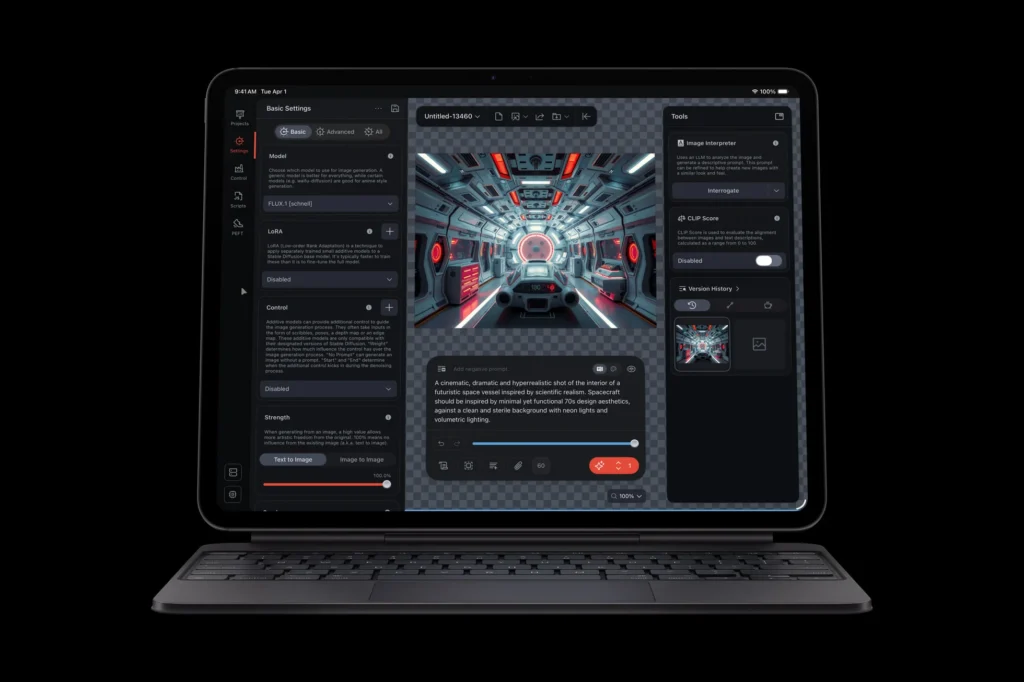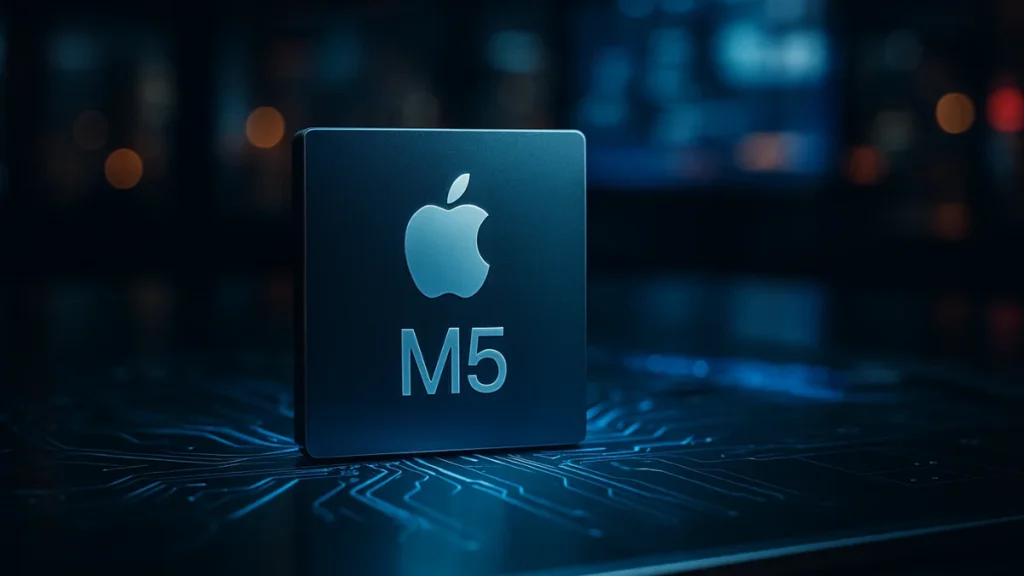Apple just dropped its boldest chip yet — the M5, claiming a 4× GPU AI boost over M4.
It arrives in the new 14″ MacBook Pro, upgraded iPad Pro, and refreshed Vision Pro — and may shift the balance in on-device AI.
Key Takeaways
- M5 brings 10-core GPU with a Neural Accelerator in each core
- Apple boasts over 4× GPU compute for AI vs M4
- CPU gets top performance core + 15% multithread boost
- Unified memory bandwidth jumps nearly 30% to 153 GB/s
- Upgraded Vision Pro displays 10% more pixels, 120 Hz refresh
The Apple M5 is built on 3 nm and features a 10-core GPU (each with a Neural Accelerator), offering over 4× peak GPU AI compute over M4, plus a faster CPU, 16-core Neural Engine, and 153 GB/s of unified memory bandwidth.
The Big Reveal: What M5 Delivers
Apple describes M5 as its “next big leap in AI performance” for Apple silicon.
Under the hood, it’s built on third-generation 3nm fabrication.
Key upgrades:
- A 10-core GPU with a Neural Accelerator in each core for AI workloads.
- Over 4× peak GPU compute for AI vs M4.
- Graphics also get a boost: up to 45% higher performance via ray tracing and shader improvements.
- CPU: Up to 10 cores (6 efficiency + 4 performance), delivering ~15% faster multithread workloads than M4.
- Unified memory bandwidth jumps ~30% to 153 GB/s over M4.
- The 16-core Neural Engine improves throughput for on-device ML tasks.

How Apple’s Devices Are Upgraded
MacBook Pro (14″)
- Ships with M5, price starting $1,599.
- Offers up to 1.6× faster graphics vs M4, and 3.5× AI vs M4 in some scenarios.
- Storage configurations now go up to 4TB.
iPad Pro
- M5 delivers up to 3.5× AI performance over previous generation.
- New wireless chip (N1) brings Wi-Fi 7 support; cellular models include C1X modem with ~50% faster speeds.
- Ships in 11″ and 13″ sizes.
Vision Pro
- Now upgraded with M5 and a new Dual Knit Band for enhanced comfort.
- Renders ~10% more pixels and supports 120 Hz refresh rate.
- Starts at $3,499.
- Available for pre-order; ships October 22.
Developer Angle & Software Integration
Apple is banking on smooth integration: existing apps built with Core ML, Metal Performance Shaders, Metal 4 should see immediate gains.
Developers can directly tap the Neural Accelerators using Tensor APIs in Metal 4.
New AI features like Image Playground and core Apple Intelligence models will be accelerated by the faster Neural Engine.
Market Reaction & Competitor Pressure
Apple’s move comes amid an industry pivot toward AI-first silicon (e.g., Qualcomm, NVIDIA).
Updating Vision Pro signals Apple’s doubling down on spatial and mixed reality as a domain for AI.
But critics note: real-world performance gains depend on software optimizations — raw spec jumps don’t always equate to user-visible change.
Risks, Constraints & Unknowns
- No M5 Pro / Max / Ultra variants announced yet — may arrive later.
- Device price points remain unchanged, limiting margins.
- Legacy software that ignores GPU AI paths may not fully benefit.
- Battery, thermal constraints under sustained AI workloads remain to be tested in real use.
What Happens Next
- Expect benchmarks within days, especially for AI workloads (LLMs, diffusion).
- We may soon see M5 Pro/Ultra at next Apple event or in 2026 press releases.
- Developers will rush to update workflows to leverage Neural Accelerators.
- Rivals will likely respond with refreshed AI-centric chips (e.g., Qualcomm, Intel).
Conclusion
The M5 is Apple’s boldest AI chip yet — packing GPU Neural Accelerators per core, upgraded CPU/Neural Engine, and wider memory bandwidth. It’s not just a spec bump: it signals Apple’s vision for on-device AI, and could shift power toward devices rather than always-cloud models — if software catches up fast.
